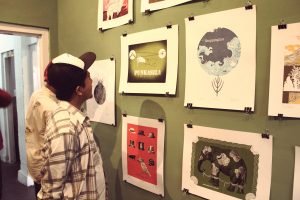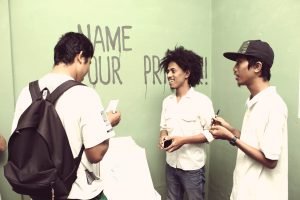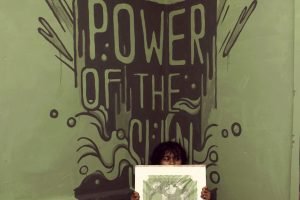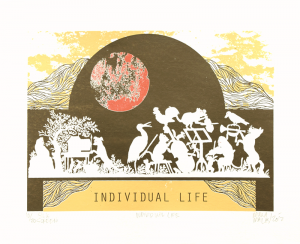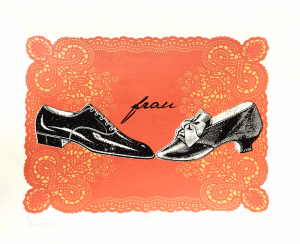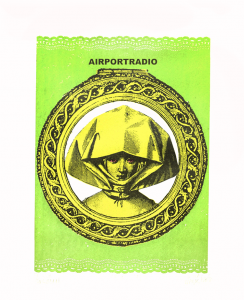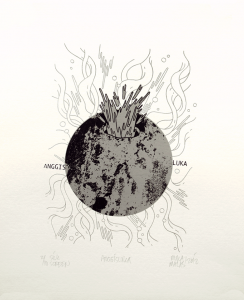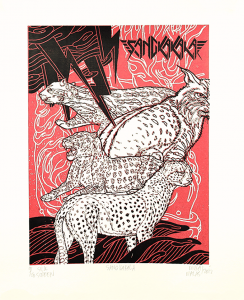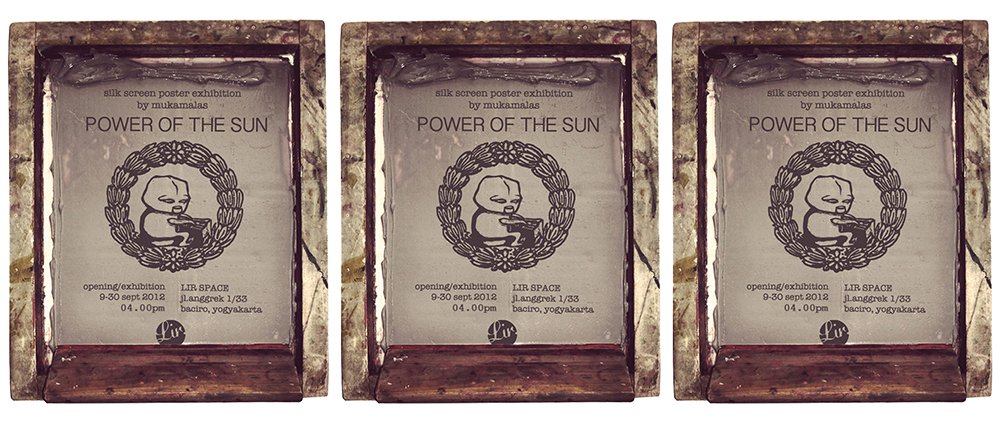
POWER OF THE SUN
9 September 2012
Lir Space
Anggrek st 1/33, Baciro, Yogyakarta
Indonesia
Power of the sun : privilege for all
Emerging in the post-boom era of painting, Prihatmoko Moki was ‘born’ as an artist with a high price since his first solo exhibition. Instead of lulled by it, this leaves him with a lot of anxiety and questions about the process. Process is something he learned in reverse right after his shock at the art market itself. Even though he comes from an art family and received an art education from an early age, the feeling of being ‘born’ too quickly is what makes Moki continue to reprocess, seek meaning, and experiment with various medium.
This prompted him to create several collaborative works, artist merchandise, making comics and books, to performance works in alternative art spaces. For him, there is a different attitude in making art in commercial galleries and alternative art spaces. As an artist, he feels that he must have an attitude that can be shown by his works in a unique way. Lir Space’s choice of location in this latest project is an attempt to find a place for testing and experimenting with the ‘fine art market’ in a very small (in this case) scope.
In the exhibition ‘Power Of the Sun’, Moki made posters of 12 bands consisting of various genres and Jogja based. The poster design is Moki’s visual interpretation of the bands of his personal choice. Not only does he feel personal , Moki is also a member of five of the twelve bands posted (Punkasila, Airport Radio, Black Ribbon, Shopping List, and The Wonosari).
The poster was made by using the silkscreen printing technique which is the characteristic of his works. This technique was chosen because of its ability to be reproduced without losing the element of hand touch and still has a special characteristic aesthetic value. Not every copy of the work is exactly the same. This imperfection is what distinguishes screen printing results from digital printed posters. In addition, Moki finds it helpful to live in a tropical country where the sun shines all year round and makes the screen printing process easier. He calls this privilege as the ‘Power Of The Sun’.
Moki himself is used to create his work based on things that are close to him; in this case-music, silkscreen printing and Jogja City. This exhibition is Moki’s attempt to bring together the fields of graphics and music that go hand in hand but still raise questions about respect for each other. This situation is uniquely judged to only be applicable in Jogja, which is the city of ‘makers’. There is always an ego and an excuse to make your own instead of buying. That’s why sometimes the system used in some cases is unique and an understanding barter/mutual cooperation system. This time, Moki throws the ‘price’ privilege on a work back to the public.
Each of these poster designs will only be printed as many as 20 sheets and the ‘art market’ will be present in this exhibition; musicians, students, and housewives have the same right to choose and determine for themselves the price they are willing to pay for each work they want. This is a form of the artist’s experimentation on the alternative art market, typical with a hint of Moki’s tingling humor. So, enjoy using your privileges and happy shopping!
Mira Asriningtyas
Lir Space
________________________________________________________________________
PASTE PASTED
Posters and music groups. It is in this poster, music finds one of its visual soul mates. Of course, there are other visual mate choices such as album covers, music videos, stage settings, and the appearance of the musicians themselves. At first the music was performed purely as music, so at classical music concerts, the performers had a neutral appearance, without unnecessary movements, even without lighting. The same concept has been carried out until now, and side by side with the music that is displayed, only the visual element. The visual element is in fact just an ‘addition’ (from a core: music), which makes it a popular genre artwork. This addition by a friend is called ‘paste’, which is used to achieve variety and distinctiveness. The initial attachment to music is the lyrics.
In this exhibition, we could see conceptual and factual music pasted at the same time. His work is the umpteenth patch in the music world (industry), initially as a provider of information: in the form of posters, which are actually a form of media information in the form of graphic prints which are usually affixed. Posters in music are then not only used to provide information for performances or performances, but also used to immortalize our idols in private spaces, both real and virtual. The spirit of learning guitar during the late 1980s youth will be even more intense if we stare at Iwan Fals behind the bedroom door, or feel like we have fought the establishment when the bare-chested poster of the Slank group appears beside the window, and we are embarrassed when the spice girls bonus poster of Hai magazine replaces it.
Magazine print media plays a big role in this poster service, which is sometimes called pin-up because the size is smaller in the magazine area. Almost all of the posters come with a photographic visual execution, because the industry world uses it to repeat musician’s performances to become merchandise, and not many proceed them with other visual executions. Moki who is also a musician, member of a band, as well as a graphic artist, is well aware that the need for posters is not based on the faces of the musicians, this then becomes an attitude for a band or musician, a small-scale ideology that does not only serve the industry with the physical commodification of musicians, but then could offer another way to combine musical reasoning and visual speech.
Not all musicians make music to become idols, or chasing wealth. Moki’s works are reminiscent of Pearl Jam group’s attitude which was reluctant to appear on album covers or concert posters, and chose to hire artists to make graphic illustrations that translated the album’s red thread, or Art Chantry who chose manual execution, especially screen printing for the cover design master that they worked on. The twelve music groups were summarized and visually translated by Moki, according to his taste, of course, in the form of collectible posters which are expected to be a connector between the music group and its fanatical listeners, become a peephole for potential listeners, and decorative room patches for everyone. How sonic-graphics are displayed by Moki, depends on each individual’s interpretation with or without the accompanying music. A similar artistic attitude is expected to open an alternative way for the presence of gig posters, band posters and other variations of visual attachments that are more distinctive in the Indonesian music scene.
Terra Bajraghosa
Moki’s best friend

